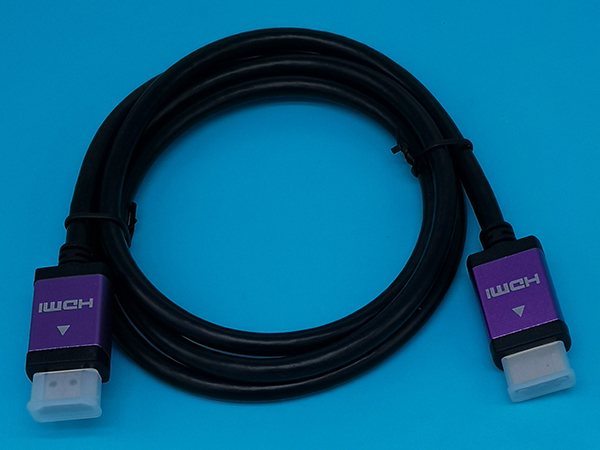- Ben Kai·Over a decade of focus on customizing data transmission lines
- HD data cable Connecting the data cable Equipment data cable

Easy to learn technology: The so-called USB3.0 is the new generation of USB interface, characterized by a very fast transmission rate, theoretically reaching 4.8Gbps, which is 10 times faster than the current 480Mbps High, Speed, and USB (referred to as USB2.0). Its appearance is basically the same as the current USB interface, and it can be compatible with USB2.0 and USB1.1 devices
Are you tired of waiting for nearly 20 minutes when copying a high-definition video? Although USB 2.0 has made a qualitative leap in speed compared to USB 1.1, we are still not satisfied, so... our familiar USB transfer rate is about to accelerate and move forward! The new generation interface called USB3.0 is ten times faster than the current USB2.0, surpassing IEEE1394 and eSATA in speed enough to make it stand out among all "non mainstream" interface mobile devices. Will it become the king of the future? Will other interfaces disappear as a result
USB3.0: Why is it so fast
USB has long been the most common standard transmission interface on devices such as MP3, MP4, DC, DV, printers, scanners, flash drives, mobile hard drives, and motherboards. Although the theoretical data transfer rate of the mainstream USB2.0 standard has reached 480Mbps per second, it still cannot meet the needs of users. With the increasing popularity of digital media, the capacity of high-definition videos, game programs, and digital photos is often several gigabytes. USB devices such as large capacity flash drives, MP4, and "massive" mobile hard drives are constantly increasing, and users may encounter simultaneous transmission of several gigabytes or even tens of gigabytes of large files at any time. If we still use the USB2.0 standard, its speed is really too slow. For example, when transferring music to a large capacity MP3 player, it often takes a few minutes. If you want to transfer larger files to a mobile hard drive, it sometimes takes several tens of minutes. Taking high-definition video transmission with a capacity of 25GB as an example, USB 2.0 takes more than 10 minutes, but as long as the device supports it, USB 3.0 theoretically only takes about 70 seconds
Time is so precious that many users do not like to wait for a long time when transferring files. Waiting is always frustrating, and fast synchronization and instant transmission have become a necessary performance requirement. To this end, Intel, in collaboration with giants such as NEC, NXP Semiconductor, HP, Microsoft, and Texas Instruments, has launched the USB3.0 standard. USB 3.0 adopts a new physical layer - which uses two channels to separate data transmission and confirmation processes, thus achieving a data transmission speed of 4.8Gbps. In order to replace the round robin detection and broadcast mechanism adopted by USB2.0, USB3.0 will adopt a packet routing technology and only allow transmission when terminal devices have data to send. The new linking standard will also enable each component to support multiple data streams, and each data stream can maintain independent priority. This feature can be used to terminate interference that causes jitter during video transmission. The transmission mechanism of the data stream also enables the inherent instruction queue, making data transmission on the USB3.0 interface more optimized. Low cost: Simple and easy to implement, with strong compatibility. Just like upgrading from USB1.1 to USB2.0, USB2.0 still adopts the same architecture as USB2.0 and is backward compatible with previous plug and play USB versions. Whether it is a USB2.0 or USB1.1 device, it can be compatible with devices with USB3.0 interfaces. From the perspective of interface structure, the USB2.0 cable uses a 4-wire packaging design, so the USB2.0 interface uses 4 metal contacts, which are respectively+5V power supply, data -, data+, and GND grounding. However, USB3.0 is not a broadcast bus. It uses a send list section in the packet header for outsourcing. The uplink interface provides decentralized USB3.0 interconnection, while the downlink interface supports USB2.0 devices, achieving the dual benefits of high-speed transmission and compatibility with a simple method
Therefore, from the perspective of the USB3.0 interface, in addition to the four metal contacts of the USB2.0 interface, it has added five smaller new contacts internally. At the same time, in addition to using copper as the transmission medium, the USB 3.0 interface and cables can also support fiber optic transmission function, and the transmission speed of fiber optic output is obvious to everyone. It is understood that after using fiber optic connections, the speed of USB3.0 can reach 20 or even 30 times that of USB2.0. Undoubtedly, the ultimate goal of the USB3.0 standard is not limited to a data transmission rate of 4.8Gbps, but rather hopes to further break through this limit speed in the future. With the comprehensive application of fiber optic wires, USB3.0 will achieve higher transmission speeds, and its future expansion and application in mainstream products will be further demonstrated. For example, achieving USB high-speed networking or transmitting radio and television program signals on a PC